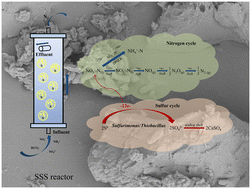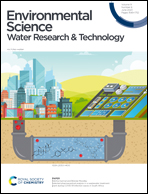Treatment of nitrate-contaminated groundwater using microbially enhanced permeable reactive barrier technology†
Abstract
Microbially enhanced permeable reactive barriers (PRBs) are a technology for the remediation of NO3−-N-contaminated groundwater. The removal of NO3−-N from nitrate-contaminated groundwater using a sulfur-based biodenitrification reactor was studied. The average values of the NO3−-N removal efficiency using SSS (sand : cement : S0 : scallop shell = 1 : 1 : 1.5 : 2) and SWC (sand : cement : S0 : wood chips = 1 : 1 : 1.5 : 0.5) reactors were 97.75% and 90.06%, respectively. In addition, the maximum value of the NO3−-N removal efficiency using the SSS reactor reached 100% with a low NO2−-N accumulation rate, and the scallop shell was essential to stabilize the pH value of the reactor and reduce the production of SO42−. In the SSS and SWC reactors, Sulfurimonas and Thiobacillus played major roles in the denitrification process, together constituting 72.29% and 84.69%, respectively. With the analysis of organic elements in the composite filler and scanning electron microscopy (SEM), we also found that S0 played an important role in the reactor. Therefore, our research could provide some technical insights into the treatment of nitrate-contaminated groundwater.

- This article is part of the themed collection: Environmental Science: Water Research & Technology Recent HOT Articles


 Please wait while we load your content...
Please wait while we load your content...